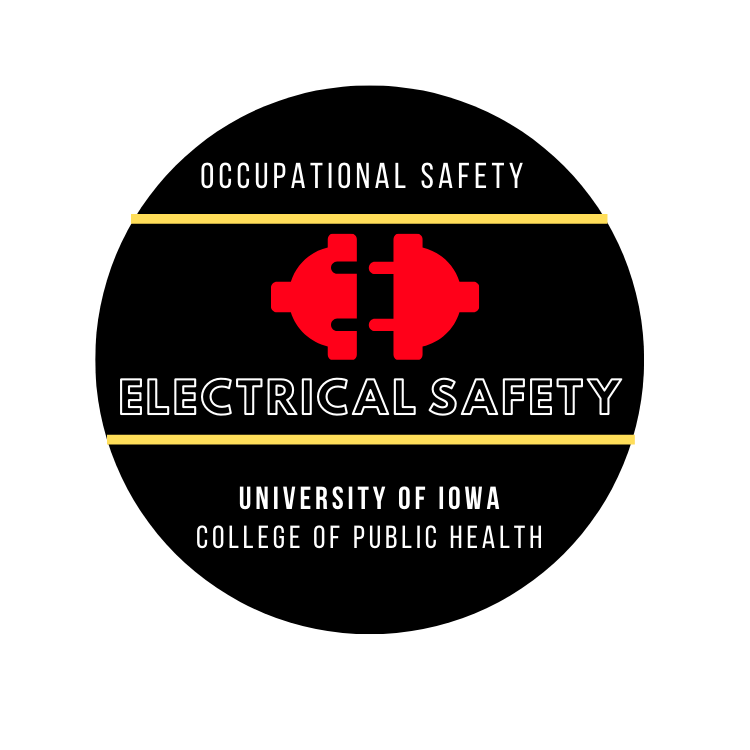Electrical Safety at Home
Electricity is a series of charged particles flowing from a high energy state to a low energy state. Many natural and human made phenomenon produce and use electricity thus meaning it must be taken seriously to protect ourselves and others. Weather its lightning, your house hold appliances, or how to keep your cords straight we got you covered.
Components
- The basics of electrical safety at home, and things to consider
- How to protect your home appliances and electronics from surges
- Managing your cords, and at home office for safety
Here is where you can find more resources from the university, as well as OSHA!
https://ehs.research.uiowa.edu/occupational/electrical-safety
Additional External Links
- OSHA Electrical Fact Sheet
- OSHA Electrical Safety Quick Card
- OSHA Controlling Electrical Hazards
- OSHA Electrical Overview
+ Provided below are important things to think about when considering at home electrical safety
+ If you would like to request a topic, or reach out with questions or comments, contact us at workfromhome.occsafety@gmail.com

Electrical Safety FAQs
What do I really need to know about electrical safety when I work from home?
Below are simple tips for how to use electrical equipment at home...SAFELY:
Remember to always have all electrical work done by a qualified professional. Take a look at this infographic to see when to call an electrician.
In a given outlet, use only one heat-applying appliance (toaster, coffee maker, heater, etc) at a time.
Major appliances such as stove, refrigerator, washer/dryer should be plugged directly into the wall outlet. Never operate these appliances using an extension cord, power strip, or wall outlet splitter.
More advanced tips if for electrical safety if you need to improve your wiring:
Arc-fault circuit interrupters (AFCIs) turn off the electricity if a dangerous condition occurs; if you need to update your wiring to work at home, this would be a good investment.
Install ground-fault circuit interrupters (GFCIs) or use devices with GFCI plugs to reduce the risk of shock, especially in locations where water may be present such as the bathroom or kitchen.
Fires do not need a flame to begin. Test AFCIs and GFCIs regularly to ensure their proper function according to manufacturer’s recommendations and prevent unintended electrical conditions.
What is an electrical surge and should I get protectors?
Surge protectors can be thought of as "insurance" against unwanted or unintended surges in electricity. The three most common sources of surge electricity are lightning strikes, utility switching, and equipment switching. Lightning is the most common form of surge causing events, followed by utility switching and equipment related surges.
Lighting frequency is mainly geographical, but hard to predict. Click here to visit a map of the frequency of lightning strikes across the US.
Here is a poster that helps explain when to use surge protectors at home: handout
See more at NFPA
Any recommendations for taming my electrical cords in my home office?
Electrical cords should not run under carpet/rugs: without you knowing it, cords can become frayed, which could start a fire.
Electrical cords should not be run across doorways, which would create a tripping hazard.
Extension cords are for temporary use only. Do not stringing two extension cords together to make it longer; order and use a longer cord, which is better designed for the longer run.
If small children are present in the home, keep power strips out of reach.
See this handout for some ideas to guide your electrical cord management.